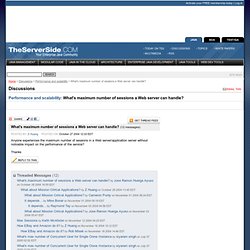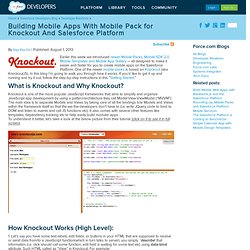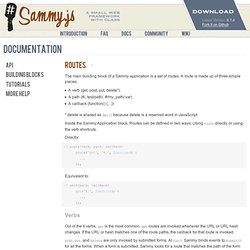

5 Best Mobile Web App Frameworks: Sencha Touch. Very few technologies have made such a breakthrough to bring mutually incompatible platforms together as HTML5 has.

HTML5 is the most popular choice for enterprise mobile developers (Forrsights 2013) with the capacity to grow even stronger. If you are in the market for a good mobile web UI framework, you are probably overwhelmed with the vast number of possibilities and combinations. And for good reason – the frameworks differ by browser compatibility, workflow logic, dependencies, licenses, performance, UI widgets availability, and so on. Things are further complicated when you must combine frameworks to meet your needs. We will break down what we think are top 5 stacks for developing world-class HTML5 mobile experiences. Built using lessons learned from Ext JS (an enterprise class desktop web framework), Sencha Touch (simply known as “Touch” in some circles) is a mature framework built to fit the most demanding app needs.
MV* Pattern Class System DOM control UI and Theming Widgets License. Thread. Thanks for the reply.The solution you mentioned is good for handling large user-based applications while the number of on-line users are relatively lower than the total registered users.

Also it's an easier solution for a cluster because it needs to share the session data across machines.But in mission critical application with relatively high in-session users, the database round-trip would post some overheads to affect the performance to certain degree.What I like to have are some real-life numbers to make an accessement to our plan.Thanks It really depends on the level of service you are trying to achieve: - If your sessions are small and can be lost without undue impact on the users, then consider sticky load balancing with no session failover, and you can support an "infinite" number of sessions. - Some application servers have in-cluster session management built in. Websphere 5 now supports it, for example.
Peace, Cameron PurdyTangosol, Inc.Coherence: Shared Memories for J2EE Clusters. Mobile Backend as a Service (MBaaS) for the Enterprise. Architect Guides. Building Mobile Apps With Mobile Pack for Knockout And Salesforce Platform. Earlier this week we introduced newer Mobile Packs, Mobile SDK 2.0, Mobile Templates and Mobile App Gallery — all designed to make it easier and faster for you to create mobile apps on the Salesforce Platform.

One of the newer mobile packs is based on Knockout (aka KnockoutJS). In this blog I’m going to walk you through how it works. If you’d like to get it up and running and try it out, follow the step-by-step instructions in this ”Getting Started.” Knockout is one of the more popular JavaScript frameworks that aims to simplify and organize JavaScript app development by using a pattern/architecture they call Model-View-ViewModel (“MVVM”). The main idea is to separate Models and Views by taking care of all the bindings b/w Models and Views within the framework itself so that the we-the-developers don’t have to (i.e. write JQuery code to bind to DOM and listen to events and call JS functions etc). 1. . 2. 3. Ko.applyBindings(new AppViewModel()); 2. Salesforce OSS libraries: 2. Sammy.js / A Small Web Framework with Class / RESTFul Evented JavaScript. Routes^ The main building block of a Sammy application is a set of routes.

A route is made up of three simple pieces: A verb (get, post, put, delete*) A path (#/, test/path/, #/my_path/:var) A callback (function() {…}) * delete is aliased as del() because delete is a reserved word in JavaScript Inside the Sammy.Application block, Routes can be defined in two ways: Using route directly or using the verb shortcuts. Directly: // route(verb, path, callback) route('get', '#/', function() { ... }); Equivalent to: // verb(path, callback) get('#/', function() { ... }); Verbs Out of the 4 verbs, get is the most common. get routes are invoked whenever the URL or URL hash changes. Post, put, and delete are only invoked by submitted forms. For example, this route: put('#/post/form', function() { ... return false; }); Would be executed when this form is submitted: If you don’t want to actually submit the form (allow its default behavior), you must return false from the matching routes callback.